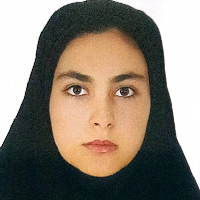Explaining the relationship between land use mixing and urban stress; Case study: Zone 8, Municipal District 1, Tehran
Urbanization is growing rapidly in this world (Evans et al., 2020a, 1). In 2007, half of the world’s population lived in cities (Chinomnso, 2014, 4). This ratio will reach 70% in 2050 (Adli & Schondorf, 2020, 2). Cities are exposed to many issues and problems due to the many advantages they have (Mahmoudzadeh and Harishchian, 2017, 60). For example, urban life affects mental health (Kyriakou & Resch, 2019, 1) and exposure to stress is the most important factor in increasing mental disorders in cities (Streit et al., 2014, 352). In fact, the stress of modern urban life or urban stress can be a basis for mental disorders (Kennedy & Adolphs, 2011, 452). Urban stress is one of the important causes of physical and mental diseases, moral anomalies, reduction of security and waste of human capital in cities. For this reason, it is necessary for urban planners and designers to pay special attention to this issue in their plans and projects. The location of land uses also has a great impact on the quality of life and the efficiency of related services, and one of the basic tasks of urban planners is to allocate land to different uses (Javadi et al., 2013, 23, 24). Today, with the expansion of new urbanism, smart growth and sustainable development approaches, the application of land use mixing as one of the important principles of these approaches in urban planning in advanced countries has increased (Pourmohammadi et al., 2014, 34) and land use mixing has become one of the important cases in the model Spatial planning has become. which includes many benefits such as reducing intra-city trips and reducing dependence on cars, increasing productivity in land use, strengthening the efficiency of land use and increasing social relations of citizens (Javadi et al., 2013, 25). Also, mixing of uses reduces the cost of providing infrastructure in the city (Zarafshan et al., 2019, 175) and improves the sense of belonging of citizens (Kotharkar & Bahadure, 2012, 1). But even though in recent years, many studies have separately dealt with urban stress and mixed use, no study has been done to explain the relationship between the two. For this purpose, this research has been conducted with the aim of explaining the relationship between urban stress and land use mix in district 8 of district 1 of Tehran municipality, which is the most stressful district of this district based on the conditions of Tehran city and the opinion of experts. Considering the importance of the subject, this research has been done with the aim of measuring the amount of mixed use and urban stress in the studied sample and explaining the relationship between these two subjects.
The research method in this research is descriptive-analytical and based on the purpose of applied research. Quantitative and qualitative methods were used to collect data and regression analysis method was used to analyze them. First, in order to select the sample to be studied, Delphi method was used and by summarizing the opinions of a group of experts in district 8 of one district of Tehran municipality, it was selected as the sample to be studied. For the overall analysis of the research, 37 urban stress indicators have been identified, of which information on 15 cases has been collected through questionnaires and surveys from area residents, and others through quantitative methods such as field sampling, spatial analysis, and library studies. Also, the information related to the mix of uses has been obtained through the entropy coefficient method. According to the population of the area in the last census (59,429) and Cochran’s formula (with a confidence level of 95%, an error of 0.05% and a normal variable rate of 1.96), the minimum number of questionnaires was 381, and finally 413 questionnaires that provided information about It questions 20 measures, distributed in blocks as a simple random sampling. Cronbach’s alpha coefficient was used to measure the reliability of the questionnaire, which was calculated as 0.73. Finally, in order to measure the relationship between mixed use and urban stress reported by citizens, regression analysis has been done. In fact, the analysis used in this article is a simple linear regression analysis. In this analysis, the degree of dependence and the direction of the influence of the independent variable on the dependent variable are examined.
The findings of the research indicate that the value of the correlation coefficient between the independent and dependent variable is 0.738, which shows that there is a high correlation between mixed use and urban stress. Also, the adjusted or modified coefficient of determination shows that 54% of the total changes in the stressfulness of people’s living environment are related to the mix of uses of their living areas, and the remaining 46% of the changes are related to other variables. In other words, the mix of uses predicts 54% of the variance of the dependent variable. These two variables have an inverse relationship with each other, and the greater the mix of uses in a block, the less urban stress. In fact, it can be said that the user mix index is able to predict changes in citizens’ stress.
As a result, by improving the mix of uses in urban blocks, urban stress can be significantly reduced and the mental health of citizens can be improved. In order to improve the mix of users, effective solutions can be used such as: 24-hour users, or the placement of compatible users in floors, etc. Also, conducting this study in other study samples can be very effective. Considering that the measurement of mixed use and stress in this study was investigated in one area, it seems that conducting this study in other areas or at the city level will clarify the hidden aspects of the relationship between these two variables.
-
Strategic Planning of Public Spaces in Order to Promote and Benefit from Social Interactions, Case Study: District 10 of Tehran Municipality
*, Somayeh Jalilisadrabad
Journal of Applied Researches in Geographical Sciences, -
Explaining the theoretical model of the relationship between social-spatial segregation and the formation of gated communities in Iranian cities
, Hashem Dadashpoor *
Geographical Urban Planning Research, -
Structural Analysis of the Dimensions of Stress Relief Urban Planning in Tehran
, Mostafa Behzadfar, *
Journal of Sustainable City, -
Examining the Level of Satisfaction of Tehran City Residents with Bus Service during the Covid-19 Pandemic
Armin Eslami, *, Hadi Gholami
Journal of Transportation Engineering,




